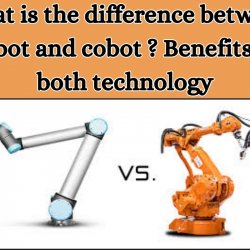What technology is behind the voting system? how technology help in election process

 Introduction
Introduction
Welcome to our blog section where we will be exploring the topic of introduction and its impact on the voting system. In recent years, technology has revolutionized various aspects of our lives, including the way we vote in elections. Gone are the days of traditional paper ballots and long waiting times at polling stations. With advancements in technology, voting has become more efficient, convenient, and accessible for citizens.
The use of technology in the voting system has greatly improved the election process. As a voter, you no longer have to physically go to a polling station to cast your vote. You can now do it from the comfort of your own home through online voting or by using electronic voting machines.
One of the key technologies behind the modern voting system is electronic voting machines (EVMs). These machines allow voters to cast their vote by pressing a button next to their preferred candidate’s name. EVMs eliminate errors caused by manual counting and provide instant results, reducing the time taken for ballot counting significantly.
Similarly, online voting has also gained popularity in recent years. It enables voters to cast their votes remotely through their smartphones or computers. This method has proven to be beneficial for those who are unable to physically go to polling stations due to various reasons such as disability or living outside their electoral district.
Moreover, technology has also made it possible for citizens living abroad to participate in their country’s elections without having to travel back home. The use of electronic ballots and online platforms allows them to exercise their right to vote conveniently.
Understanding the Basics of Voting Systems
- Plurality Voting (First-Past-The-Post): In this system, voters select one candidate, and the candidate with the most votes wins, regardless of whether they have a majority. This method is simple but can lead to outcomes where the winning candidate does not have majority support.
- Majority Runoff Voting: If no candidate achieves a majority in the first round of voting, a second round is held between the top two candidates. The candidate with the majority of votes in the runoff is declared the winner. This system ensures that the winning candidate has majority support but can be resource-intensive.
- Proportional Representation: This system aims to ensure that the share of seats a party gets in a legislative body reflects the proportion of votes they received. Various methods, such as the party-list system and the single transferable vote (STV), are used to achieve proportional representation. This system allows for a more accurate representation of diverse political views.
- Instant-Runoff Voting (Alternative Vote): Voters rank candidates in order of preference. If no candidate has a majority of first-preference votes, the candidate with the fewest votes is eliminated, and their votes are redistributed based on the voters’ next preferences. Instant-runoff voting promotes consensus candidates who are preferred by the most voters.
- Approval Voting: Voters can vote for as many candidates as they approve of, and the candidate with the most approvals wins. This system encourages voters to support all acceptable candidates but may not fully reflect their preferences.
Technology and Its Role in the Voting System
- Electronic Voting Machines (EVMs): EVMs enable the electronic casting and counting of votes, which can streamline the voting process and expedite the tabulation of results. They can reduce human errors in the vote-counting process and provide faster results. However, the security of EVMs is a significant concern, as they can be susceptible to hacking and tampering, potentially undermining the integrity of the election.
- Online Voting and Mobile Voting: The introduction of online voting and mobile voting systems aims to enhance accessibility and convenience, particularly for remote and overseas voters. However, ensuring the security, privacy, and integrity of online and mobile voting systems is a complex challenge. Safeguarding against cyber threats, ensuring voter authentication, and maintaining voter anonymity are critical considerations in the implementation of such systems.
- Blockchain Technology: Blockchain has been proposed as a potential solution to enhance the security and transparency of the voting process. Its decentralized and tamper-resistant nature can provide a secure and immutable ledger for recording votes. Blockchain-based voting systems can improve transparency, auditability, and the verifiability of election results. However, challenges related to scalability, user privacy, and ensuring the security of the entire system still need to be addressed.
- Voter Registration and Information Systems: Technology plays a crucial role in maintaining accurate voter registration databases and providing voters with information about polling locations, candidates, and ballot measures. Voter information systems help streamline the voter registration process, enable online voter registration, and ensure that eligible voters can easily access the information they need to participate in elections.
- Cybersecurity and Data Protection: Protecting the integrity and security of voter data and election infrastructure is paramount. Robust cybersecurity measures, including encryption, multi-factor authentication, and regular security audits, are necessary to safeguard against cyber threats and unauthorized access to sensitive electoral information.
- Transparency and Auditing Tools: Technology can facilitate the implementation of transparent and auditable voting systems. Voter-verifiable paper trails, risk-limiting audits, and open-source software can contribute to the transparency and verifiability of the voting process, allowing stakeholders to audit and verify the accuracy of election results.
Security Measures Implemented in Modern Voting Systems
- End-to-End Encryption: To protect the confidentiality of voter data and election results, end-to-end encryption is implemented to secure the transmission and storage of sensitive information. Encrypted communication channels and data storage systems help prevent unauthorized access and ensure that data remains confidential throughout the voting process.
- Multi-Factor Authentication (MFA): Multi-factor authentication is used to verify the identities of voters, election officials, and other stakeholders accessing the voting system. By requiring multiple forms of authentication, such as passwords, biometrics, or hardware tokens, MFA helps prevent unauthorized access and ensures that only authorized individuals can access the voting infrastructure.
- Voter-Verified Paper Audit Trails (VVPATs): VVPATs provide a physical paper record of each voter’s selections, allowing voters to verify that their votes have been accurately recorded. These paper audit trails serve as a crucial backup in the event of any disputes or concerns about the electronic voting results, enabling independent verification and audit of the election results.
- Robust Authentication and Authorization Protocols: Secure authentication and authorization protocols are implemented to control access to the voting system and prevent unauthorized users from tampering with the system or manipulating voting data. Strong authentication mechanisms, access controls, and permission-based systems are crucial for ensuring that only authorized personnel can access and manage the voting infrastructure.
- Regular Security Audits and Penetration Testing: Voting systems undergo regular security audits and penetration testing to identify vulnerabilities and weaknesses in the system. Independent security experts conduct comprehensive assessments to identify potential security threats and recommend measures to strengthen the security posture of the voting system, ensuring that it remains resilient against evolving cyber threats.
- Physical Security Measures: Physical security measures, such as secure storage facilities for voting machines and ballots, surveillance systems, and access controls, are implemented to protect the integrity of the physical components of the voting system. These measures help prevent tampering, theft, or unauthorized access to critical voting infrastructure and equipment.
- Continuous Monitoring and Incident Response Plans: Continuous monitoring of the voting system is essential to detect and respond to any security incidents or anomalies promptly. Incident response plans are developed to outline the steps to be taken in the event of a security breach or attempted intrusion, ensuring a swift and effective response to mitigate any potential risks or threats to the integrity of the election process.
Enhancing Accessibility with Technology in the Election Process
Technology has always played a significant role in shaping our society and improving various aspects of our lives. In recent years, it has also been integrated into the election process to enhance accessibility for voters. With advancements in technology, the voting system has become more efficient, accurate, and inclusive.
Gone are the days of manual vote counting and long queues at polling stations. Electronic voting machines have replaced traditional paper ballots in many countries. These machines not only make the voting process quicker but also reduce the chances of errors and fraud. The results can be tallied more accurately and promptly, giving a clear picture of the election outcome.
Moreover, electronic voting machines have special features that make them accessible for people with disabilities. For example, they have audio ballots for visually impaired voters and Braille touchpads for those who are blind. This technology ensures that every citizen can exercise their right to vote independently and with dignity.
Another essential aspect of technology in the election process is online registration systems. These systems allow people to register to vote or update their information from the comfort of their homes. Gone are the days when one had to stand in long lines at government offices to get themselves registered as voters. Online registration systems have made it easier for individuals to participate in the election process without any significant barriers.
These systems also help reduce errors in voter registration by validating information provided by the applicants instantly. They also allow people to check their registration status online and make any necessary changes before election day. Additionally, online registration makes it easier for young people who are just turning 18 to get registered as voters.
Leveraging Data Analysis for Efficient Election Management
- Voter Registration and Outreach: Analyzing demographic data, voter registration patterns, and historical voter turnout can help election management bodies identify eligible voters, target outreach efforts, and streamline the voter registration process. Data analysis can enable the identification of underserved communities, facilitating targeted outreach campaigns to increase voter participation and engagement.
- Predictive Modeling for Voter Turnout: By employing predictive modeling techniques, election management bodies can forecast voter turnout based on historical data, demographic trends, and external factors influencing voter behavior. These predictive models can inform resource allocation, staffing decisions, and the allocation of voting equipment, ensuring efficient management of polling stations and resources on election day.
- Geospatial Analysis for Polling Station Location Planning: Geospatial analysis can aid in the optimal planning of polling station locations, considering factors such as population density, accessibility, and demographic distribution. By leveraging geographic information systems (GIS) and spatial analysis, election management bodies can identify suitable polling locations that are easily accessible to voters, improving the overall voting experience and reducing logistical challenges.
- Real-time Monitoring and Reporting: Implementing data analytics tools for real-time monitoring of election activities and results can enable election management bodies to identify and address issues promptly. Real-time data analysis can facilitate the monitoring of voter turnout, equipment status, and potential irregularities, allowing for timely interventions and corrective actions to ensure the integrity and transparency of the electoral process.
- Fraud Detection and Prevention: Utilizing data analysis for anomaly detection and pattern recognition can help identify potential instances of electoral fraud or irregularities. By analyzing voting patterns, audit trails, and other relevant data, election management bodies can detect suspicious activities and implement measures to prevent fraud, ensuring the fairness and credibility of election results.
- Post-Election Analysis and Reporting: Conducting comprehensive post-election data analysis enables election management bodies to assess the overall election process, identify areas for improvement, and generate comprehensive reports on voter participation, election outcomes, and performance indicators. Post-election analysis can provide valuable insights for future planning and decision-making, facilitating continuous improvement in election management practices.
You can also read:
star agile data science reviews






Ingen kommentarer endnu